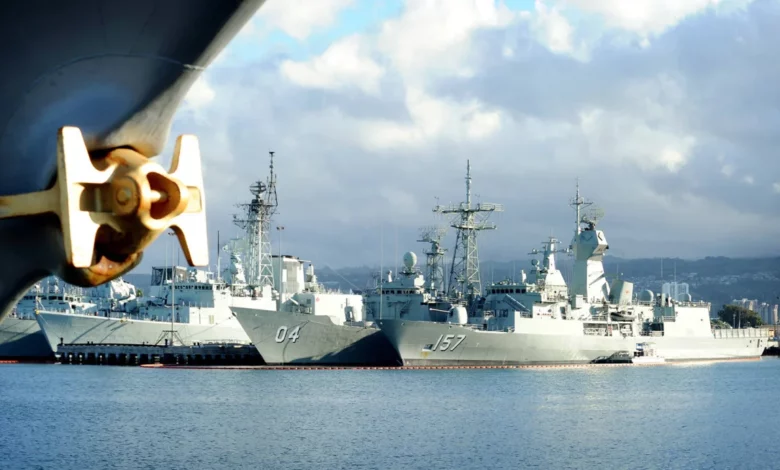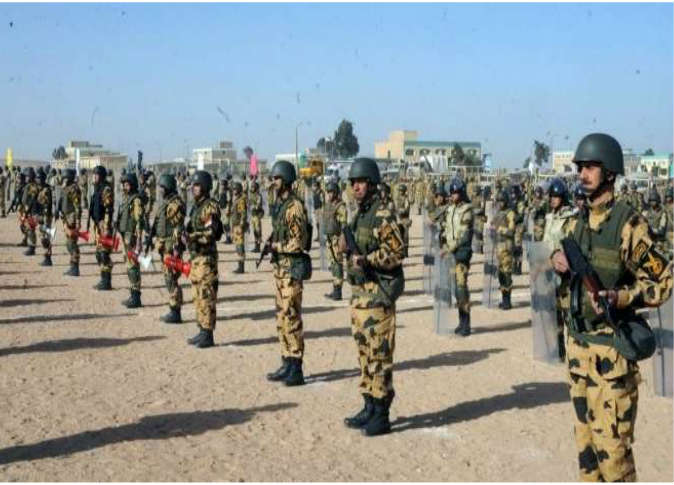
According to a government statement, the plans will see the Royal Australian Navy boost its fleet of major surface warships to 26 in total after an independent review led by a retired US Navy admiral found “the current and planned surface combatant fleet is not appropriate for the strategic environment we face.”
“A strong Australia relies on a strong navy, one that is equipped to conduct diplomacy in our region, deter potential adversaries, and defend our national interests when called,” Australian Chief of Navy Vice Adm. Mark Hammond said in the statement.
“The size, lethality and capabilities of the future surface combatant fleet ensures that our navy is equipped to meet the evolving strategic challenges of our region.”
The plan to bolster the fleet includes 20 destroyers and frigates, and six Large Optionally Crewed Surface Vessels (LOSVs), that can operate with sailors aboard or independently as drones.
Those surface vessels will join a fleet of nuclear-powered submarines Australia plans to build under the AUKUS pact with the United States and the United Kingdom, the first three of which are expected to be delivered early next decade.
The independent review noted Australia had “the oldest fleet Navy has operated in its history,” according to the government statement.
And analysts said the security environment in the region – where rival China has built up the world’s largest navy and is asserting its territorial claims in disputed waters – meant Australia had to act.
Collin Koh, research fellow at the S. Rajaratnam School of International Studies in Singapore, said increasing the Australian fleet’s size “is essential if there’s a need for capacity to match the growing set of mission requirements, especially projecting presence across the Indo-Pacific.”
While there is no mention of China in the buildup plan, the review commission said the future surface fleet needed the ability “to support critical activities, including patrolling our northern approaches, close escort and theatre sea lift missions.”
And analysts pointed to possible threats from China.
“It probably signals how concerned both the government and defense are about our strategic circumstances,” Jennifer Parker, adjunct fellow in naval studies at UNSW Canberra, said in an interview with the Australian Broadcasting Corporation (ABC).
“There are many saying that for the period of the latter 2020s, we are entering a period of risk in the Indo-Pacific and that’s generated by China’s increased aggression in both the South China Sea and Northeast Asia,” she said.
Period of risk
Upon completion in the mid-2040s, the naval buildup would yield a fleet with the country’s three current Hobart-class guided-missile destroyers, which will get upgrades to their air defense and strike systems; six new Hunter-class frigates with anti-submarine warfare as well as strike capabilities; 11 new general purpose frigates for air defense, strike and escort duties; and six of the new LOSVs, which would each have 32 Vertical Launching System (VLS) cells for missiles.
An additional 25 smaller vessels will be used for offshore patrol and maritime security duties, the government said.
Noting the urgency to improve the country’s surface fleet, the government said the first of the 11 general purpose frigates would be built on an existing design imported from Japan, South Korea, Germany or Spain, with work later transitioning to an Australian shipyard.
In the ABC interview, Parker noted that there was a “period of risk” for Australia in the plan, in that some older ships will be retired before new ones come online.
John Bradford, Council on Foreign Relations international affairs fellow, said Australia would need to be steadfast in sticking with the plan.
“The plan is realistic so long as the Australian government sustains its commitment to this effort,” said Bradford, who added that the first of the Hunter-class frigates, which he called the “premier system” in the plan, will not join the fleet until 2032.
Opposition criticism
Opposition lawmaker Andrew Hastie, shadow minister for defense, criticized the buildup’s timeline.
“We won’t see a ship in the water until 2031, assuming this plan stays to timeline. It does not meet the urgent strategic challenges posed by this dangerous world,” Hastie told reporters.
Analysts said when the ships do come online, they will need sailors to crew them, something that’s not guaranteed.
“Even with high levels of automation found on these planned new build ships, what about crewing? Will (the navy) face a manpower challenge in manning this expanded fleet?” Koh asked.
But the government said the buildup “requires a minimal increase to crew complement due to a rationalization of crew sizes and an increased reliance on technology and automation.”
In its announcement Tuesday, the government also touted the economic benefits of the buildup.
“This investment provides a clear pathway for the shipbuilding industry and workforce in South Australia and Western Australia,” the release said.
Pat Conroy, minister for defense industry, said shipbuilding would create 3,700 jobs in the next 10 years and thousands more down the line.
However, the opposition Greens party called the plan a “multi-billion-dollar mistake” driven by local political concerns to protect shipbuilding jobs – and political ones.
“No matter how many times Defence leadership fails, both overcharging and underdelivering, they keep their jobs and get rewarded with billions more public dollars,” Greens defense spokesperson Sen. David Shoebridge said in a statement.
CNN’s Angus Watson and Hilary Whiteman contributed to this report.



